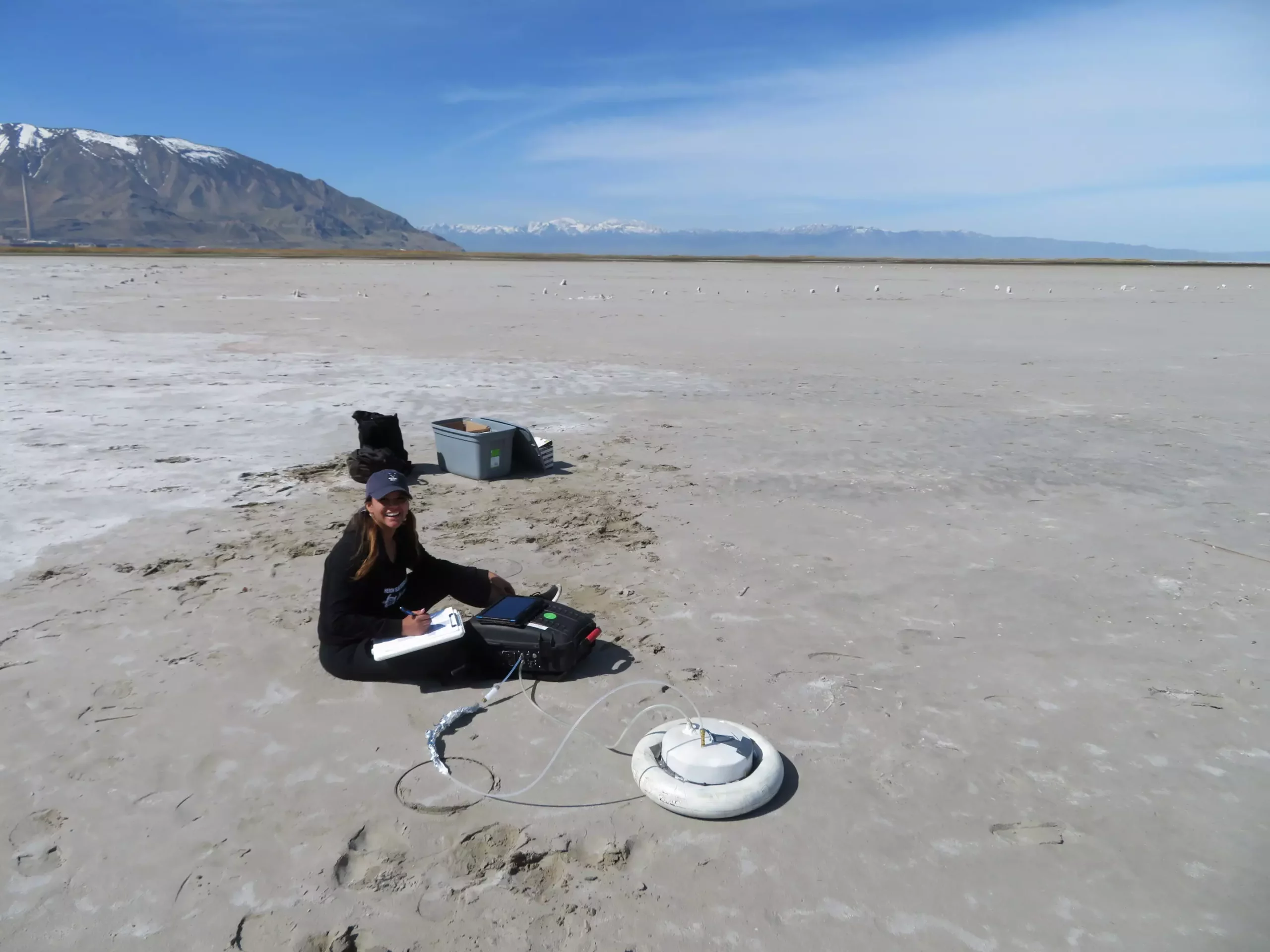Recent research from the Royal Ontario Museum has brought to light a concerning reality regarding our planet’s environmental health, specifically highlighting the Great Salt Lake in Utah. While greenhouse gas emissions are commonly associated with vehicles, industries, and power plants, this fresh perspective reveals that drying lake beds contribute a staggering 4.1 million tons of carbon dioxide and other greenhouse gases into our atmosphere annually. The implications of this discovery should compel scientists, policymakers, and citizens alike to reconsider how we view environmental threats.
Unlike many traditional sources of emissions, which are often scrutinized and regulated, the Great Salt Lake represents an overlooked contributor to climate change that demands urgent attention. The study, aptly titled “A desiccating saline lake bed is a significant source of anthropogenic greenhouse gas emissions,” elucidates that human activities, particularly water consumption for agriculture and industry, are exacerbating the drying of this vital ecosystem. The research serves as a clarion call to recognize that our actions in water management directly relate to pressing climate issues.
The Decline of the Great Salt Lake
Historically, the Great Salt Lake has ebbed and flowed in water levels based on seasonal meltwater from the surrounding mountains. Yet current trends point toward a disturbing pattern: record-low water levels signal an impending environmental crisis. It is evident that human-led consumption is drastically altering the hydrology of the region. As the lake dries, we are not only losing a critical habitat for diverse wildlife, but we also face deteriorating air quality and accelerated climate change driven by the emissions from its exposed sediments.
The alarming rates at which saline lakes such as the Great Salt Lake, Aral Sea, and Lake Urmia are vanishing emphasize a critical narrative. While global water demands are escalating, the balancing act between human consumption and environmental preservation has skewed dangerously in favor of exploitation. As more lake beds are exposed, they release carbon dioxide and methane—powerful greenhouse gases that intensify global warming. This depletion of saline lakes exacerbates a vicious cycle contributing to further climatic instability.
The Research Process: Analyzing Emissions
The research conducted over the course of 2020 utilized innovative methodologies to assess emissions from the Great Salt Lake’s drying bed. Researchers employed a portable greenhouse gas analyzer, taking measurements every two weeks across various locations of the lake bed. Such rigorous fieldwork not only provided a comprehensive insight into the emissions produced but also accounted for the spatial variability across this vast saline lake.
What makes these emissions particularly potent is the high concentration of methane, a gas that is 28 times more effective at trapping heat in the atmosphere than carbon dioxide. The findings from this study—that 94% of the emissions were carbon dioxide—paint a stark picture of how the lake’s drying process contributes significantly to Utah’s anthropogenic greenhouse gas output.
The Urgency of a New Perspective
One of the more striking revelations from this research is the relationship between temperature and greenhouse gas emissions. As temperatures rise, so do the emissions from the exposed lake bed, suggesting an alarming feedback loop. These findings underline the necessity for a paradigm shift in how we approach climate change mitigation strategies. Policymakers must integrate the effects of desiccation into current models to create more holistic and effective environmental policies.
Furthermore, examining historical data and chemistry of the lake yields evidence that it was not historically a significant source of greenhouse gases. Its recent role as a greenhouse gas emitter marks it as a novel driver of atmospheric warming, drawing attention to human impact on natural systems. This stark realization should prompt immediate action and discussion regarding responsible water management practices and protective measures for vulnerable ecosystems.
A Call to Action
As climate change continues to loom large on the global stage, the situation surrounding the Great Salt Lake acts as a microcosm of a larger problem—our insatiable need for freshwater is compromising vital ecosystems. The research findings compel us to advocate for better watershed planning and create frameworks that recognize the interconnectedness of water systems, biodiversity, and climate stability.
Ultimately, recognizing the Great Salt Lake not merely as a picturesque landscape but as a powerful player in our climate narrative is essential. It is time for urgent and informed discussions that will foster solutions tackling not only the emissions from drying lake beds but also the larger North American water management strategies that contribute to this ongoing issue. The stakes are high; it is our responsibility to act decisively before we face irreversible consequences in our battle against climate change.


Leave a Reply